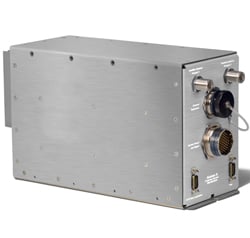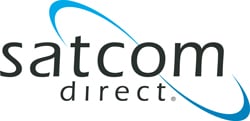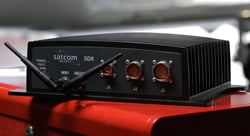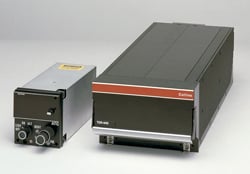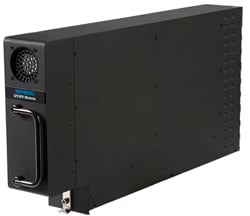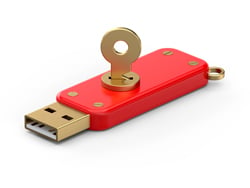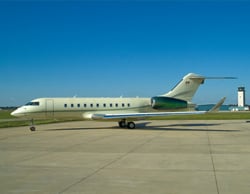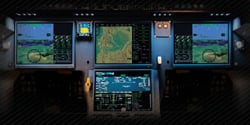Contributed by Adrian Chene , avionics installation tech rep
For many aircraft owners, choosing which aircraft systems require upgrade can be a real challenge. None of the current publications are written with the aircraft owner in mind. Duncan Aviation has changed that. We have designed the Duncan Aviation Avionics Catalog to provide a common sense non-aviation explanation of what a modification actually does for you the owner.
DOM’s should also feel free to use this information when explaining the benefits of recommended upgrades to owners."
To discuss avionics installation solutions specific to your aircraft, contact a Duncan Aviation Avionics Installation Sales Rep.
.jpg)
 |
Domestic Inflight Internet Getting office speed when en route to Aspen.The Aircell GoGo internet is not your father’s dial-up system. It is fast. Airline passengers share one Aircell internet connection. You can have your very own. How fast, you ask? 1-3 Mbps fast. With GoGo, you get more than just the Internet. Aircell has engaged the major cellular players, providing an App that allows you to send and receive texts and phone calls to your personal phone while in flight. There is an additional initial and monthly charge for this service. What is in the Aircell system? Two electronics boxes and two belly-mounted antennas that when installed spell staying in charge in flight. The Aircell system has an STC and can be installed during most scheduled inspections without delaying your aircraft’s return. |
|
|
International Inflight Internet For the plugged-in business traveler, the notion of slipping off the grid during long transoceanic flights is not a viable option. They feel unproductive if not allowed to extend their office skyward and keep working. Cobham developed the most cost- effective international internet system for this application. The Cobham Aviator 700 internet connection runs at approximately 432Kbps during the long legs that challenge your resistance to boredom. When paired with the right router, internet connection speeds can be even faster. In addition to providing reliable internet connections, it operates as a phone system allowing your aircrew to send and receive data messages to Air Traffic Control and your maintenance teams. The Aviator 700D may also provide the satellite link for a FANS 1/A aircraft. If the antenna system can be reused, the installation can be complied with during other scheduled work with no impact to schedule. Aircraft requiring a new antenna will require more time to install the system. Either way, call us. We’ll answer all of your questions. |
|
|
Guest Entertainment Whether you want to review a presentation with your sales team on a bigger screen or are just trying to get the kids to fall asleep en route to Paris, entertainment systems remain as relevant in the air as they are on the ground. A cabin system that represents an excellent mix of value versus cost is called Venue from Rockwell Collins. State-of-the-art components provide fully digital vibrant 1080p video and crystal clear heart pounding sound at a price point similar to the low def equipment available just a few years ago. Your HD iTunes content, and ripped media at home are now available in flight via Rockwell Collin’s Skybox. Skybox stores content locally, providing a familiar environment, friendly to board members and family alike. Control of your environment has never been so easy with apps that turn your IOS device into a universal cabin remote. |
|
|
International Phone From Antarctica to Chicago you have a need to talk to people. You don’t say goodnight to a child or negotiate a delicate point of a contract via email? When you need to be clear, even in remote regions of the world, Aircell’s Axxess system is a dual-line phone that works anywhere your aircraft is. Axxess has noise-canceling handsets with two lines of communication. It is a relatively low cost system to install with a low cost per minute to use. If you decide to install it along with Aircell’s GoGo domestic internet service, you will save over $10,000. Aircell has established itself as the largest manufacturer of Iridium systems in the business jet world and maintains its position as an industry leader in domestic internet services. |
|
|
Geek Chic: Routers Matter I will rattle off the laundry list of bad to the bone IT gizmos that have been included in this unit, because I know part of being geek chic is embracing the lingo, but listen closely; GET THIS ROUTER. I should also mention that the Satcom Direct’s Router costs less than any of its closest competitors with an increased level of versatility and added features. It streams movies securely to mobile devices from onboard media servers super-fast. The Satcom Direct router automatically establishes a secure link between the aircraft and your home or corporate network when connected outside the U.S. This secure link makes your international internet faster due to hardware level accelerators that compress and encrypt traffic so that your computer doesn’t have to. It also has cellular failover, so you aren’t spending big bucks while parked on the tarmac. Pesky hackers are fended off with all the standard Wi-Fi security options. |
|
|
ADS-B: Meeting The Mandate A mandate is something a regulatory authority like the FAA will require to continue to operate your aircraft without limitations. ADS-B is one such mandate that is required by 2018 for Europe (EASA), 2020 in the U.S. (FAA), and right now in the pacific nations. ADS-B increases the amount of information available to Air Traffic Controllers (ATC) about your aircraft. This permits better traffic management and safety for both ATC and you. |
|
|
FANS 1/A: Why is it necessary? Imagine a school of fish swimming in the ocean’s current. More and more fish enter the current as time goes on until there are so many that not all of them are able to fit in the current. That is essentially what has occurred over the Atlantic Ocean for aircraft. The air current for aircraft is called the North Atlantic Track (NAT). It is a shifting highway in the sky that changes depending on wind direction. A few years ago controllers began to notice this current becoming more and more crowded. FANS 1/A is a new communications method that theoretically allows controllers to pack more aircraft in this highway in the sky. It equates to fuel savings and shorter flight time. It is now being mandated for trans-Atlantic NAT aircraft. |
|
|
Crew Gizmos: Retire The Floppy For the last 15 years, the 3.5-inch floppy disk has been the mainstay of your crew’s interface to the computers on board your aircraft. It is time to upgrade to a thumb drive. While not a quantum leap of technology, it loads faster and more reliably. Both Honeywell and Rockwell Collins have released their new thumb drive data loaders that are rugged and consistently perform. Also, an upgrade to your floppy drive in many cases is required prior to doing other upgrades to your aircraft. |
|
|
WAAS/LPV Have a better chance of landing when and where you want.WAAS/LPV sounds more like a syndrome than a solution for problematic landing procedures. It is a series of system and software upgrades that allow your aircraft to perform better during an approach to an airport. If your aircraft is equipped with WAAS/LPV you will be able to land at airports experiencing poor weather where you would have normally been diverted. This means more on-time landings. Also, with more and more aircraft being equipped with WAAS/LPV every day, aircraft not equipped with WAAS/LPV may have a lower resale value when it comes time to sell. |
|
|
Bunches of Mods: Batch 3+ With the current pace of Batch 3+ completion, the most important thing to know about Batch 3+ is that it is a pay me now or pay me later proposition. Aircraft not equipped will suffer dearly at time of sale and face operational limitations. With that being said, it is recommended to invest now in Batch 3+, while competition amongst aircraft shops is most likely to get you the best deal. Batch 3+ has three parts. Two are optional, one is mandatory before completing the others. Batch 3+ Part 1 (mandatory) is a general upgrade of the operational software of the avionics system. In addition to fixing some known problems, it adds future provisions to keep the aircraft viable through additional upgrades. Batch 3+ Part 2 (optional) is related to FANS 1/A. This modification allows your aircrews to keep operating in oceanic highways in the sky with better communications to air traffic control. This is due to new flying rules Batch 3+ Part 3 (optional) is related to WAAS-LPV. This modification allows the aircrews to fly into airports that are experiencing poor weather conditions with more success. |
|
|
Falcon EASy II Must Have ModsThe Easy II upgrade is not all about fancy gadgets. It is about bringing your aircraft into a new digital flight environment. Air traffic management agencies around the world are changing the rules of flight in air space over the oceans, Europe and even here in the U.S. What follows is a baseline for EASY II modifications that will maintain your aircraft’s current operational capabilities. The EASy II Baseline upgrade provides software fixes some issues and provides minor operational improvements. It also serves as a prerequisite for all other modifications. CPDLC This is a European mandate related to air traffic control operations in the European Union (EU). FANS 1/A - A mandate that improves communications from air traffic control operations to your aircrews during trans-oceanic flights. ADS-B - A U.S. (2020) and EU (2018) mandate that increases the aircraft information available to air traffic controllers. |
|
|
Falcon EASy II Safer Nice-to-Have OptionsNow let’s discuss options that can significantly increase the level of safety aboard your aircraft. It is important to note that you and your teams are not alone in this process, Duncan Aviation’s sales teams are here to help explain the advantages and costs associated with modifications in a refreshingly non-technical manner.
|
Adrian Chene is an Avionics Tech Rep for Duncan Aviation. He provides troubleshooting and technical advice on avionics installation services, and specializes in custom, integrated HSD solutions. He began working in aviation in 1996.


.jpg?width=175&height=460&name=aviator_700_black_small-(blog).jpg)



